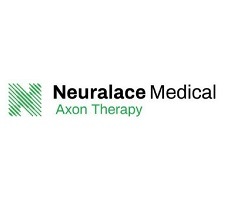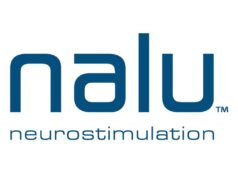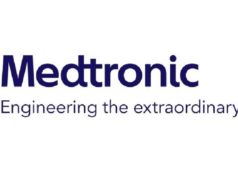 Neuralace Medical has announced the US Food and Drug Administration (FDA) clearance of its “groundbreaking” Axon therapy for the treatment of chronic painful diabetic neuropathy (PDN). This “landmark approval” marks the first ever FDA clearance of a non-invasive, magnetic peripheral nerve stimulation (mPNS) treatment for PDN, a company press release states.
Neuralace Medical has announced the US Food and Drug Administration (FDA) clearance of its “groundbreaking” Axon therapy for the treatment of chronic painful diabetic neuropathy (PDN). This “landmark approval” marks the first ever FDA clearance of a non-invasive, magnetic peripheral nerve stimulation (mPNS) treatment for PDN, a company press release states.
Neuralace further claims that Axon therapy utilises the “pioneering approach” of mPNS to deliver a quick, painless, non-pharmacological and non-invasive treatment. Each session with the technology lasts just 13.5 minutes, and harnesses the power of magnetic pulses to provide relief—representing, in the company’s view, a “significant advancement” in pain management.
“The FDA clearance of Axon therapy is a monumental step forward in the treatment of PDN,” said Neuralace chief executive officer Keith Warner. “This first-of-its-kind, non-invasive solution embodies our commitment to innovative, patient-centred care, offering effective pain relief without the drawbacks of conventional, more invasive treatments.”
In the AT-PDN study—a recent, double-blind, multicentre randomised controlled trial (RCT) involving 71 patients—Axon therapy demonstrated “remarkable” efficacy, as per a Neuralace press release. The study included 21 participants in a sham group and 50 in an active mPNS group, with the sham group given an opportunity to cross over (CX group) at 30 days. The primary endpoint—30-day visual analogue scale (VAS) pain scores—alongside secondary endpoints including patient-reported outcomes, highlighted “significant improvements” in subject outcomes.
Key findings from AT-PDN at day 30 include a 72.3% responder rate in the treatment group; a 57.6% average reduction in VAS pain score in the treatment group; a 35% average reduction in numbness in the treatment group; and a 20% average reduction in quality of life-diabetic neuropathy (QOL-DN) total score.
Also, at day 90, the treatment group exhibited an 81.4% responder rate, with the CX group showing an 88.9% responder rate. Patient global impression of change (PGIC) responder rates at 90 days were 93% in the treatment group and 83.3% in the CX group.
“These results not only demonstrate the effectiveness of Axon therapy in reducing pain and numbness associated with PDN, but also highlight its role in significantly enhancing the quality of life for patients,” stated AT-PDN principal investigator Lora Brown (TruWell Health, St Petersburg, USA), who is set to present results from the study at the upcoming North American Neuromodulation Society (NANS) annual meeting (18–21 January, Las Vegas, USA).
NANS 2024 presentations
Neuralace recently announced its plans for NANS 2024, with principal investigator Leonardo Kapural (Carolinas Pain Institute and Center for Clinical Research, Winston-Salem, USA) also set to present results from the SEAT study evaluating Axon therapy, featuring 180-day follow-up across both primary (VAS pain scores) and secondary (patient-reported outcomes) endpoints.
The SEAT study has reached its 180-day follow-up and has exhibited a 65.2% responder rate, with a 55% average reduction in pain, according to Neuralace. Kapural will present these extended follow-up results as well as clinical durability data supporting the continuing patient use of Axon therapy.
“We are thrilled to see the continuing efficacy of Axon therapy through the six-month point, with patients achieving substantial pain relief while receiving monthly Axon treatments,” Kapural said. “This study confirms the potential for patients to receive significant, long-term pain relief and functional improvement.”
“In our clinical experience thus far with Axon therapy, we are seeing some of the best Axon treatment results in the PDN patient group within the SEAT study,” added Joe Milkovits, chief operating officer at Neuralace.
In addition, Marshall Bedder (Medical College of Georgia at Augusta University, Augusta, USA) will present an abstract on the 180-day Axon therapy experience at Veterans Affairs (VA) Augusta’s Pain Medicine Clinic, encompassing “diverse patient types”, at NANS 2024.
A retrospective review of the real-world use of Axon therapy and mPNS was conducted at the VA Augusta Pain Medicine Clinic to evaluate the longer-term performance of Axon (>180 days) for treatment efficacy. Initial treatment data from 81 patients followed over 180 days revealed a 78% responder rate (>50% pain relief). Maintaining a once-a-month treatment schedule was consistent with patient satisfaction and showed good analgesic levels for most patients, Neuralace claims.
Bedder expressed satisfaction with the integration of Axon mPNS into VA Pain Medicine treatment algorithms, noting: “Referrals have increased by word of mouth from patients to their referring physicians, and to their fellow VA friends and neighbours. Neuropathic pain patients who were previously receiving integrative therapy or pharmacological approaches with limited success are finding excellent non-invasive relief with Axon therapy. We are seeing new applications emerge from mPNS, such as PDN and even osteoarthritis pain. There are a lot of happy veterans who are eager to spread the word of their treatment success.”










